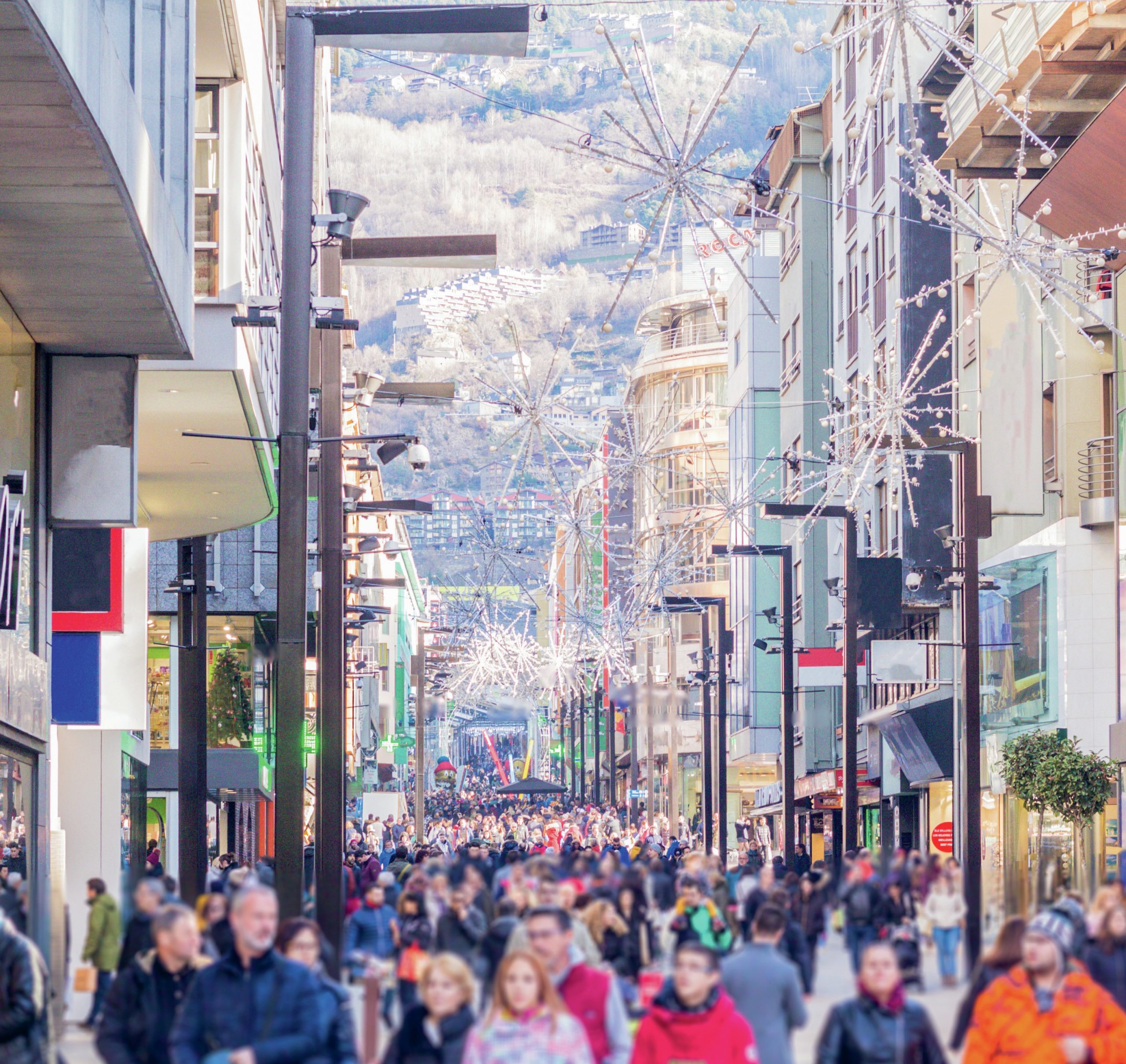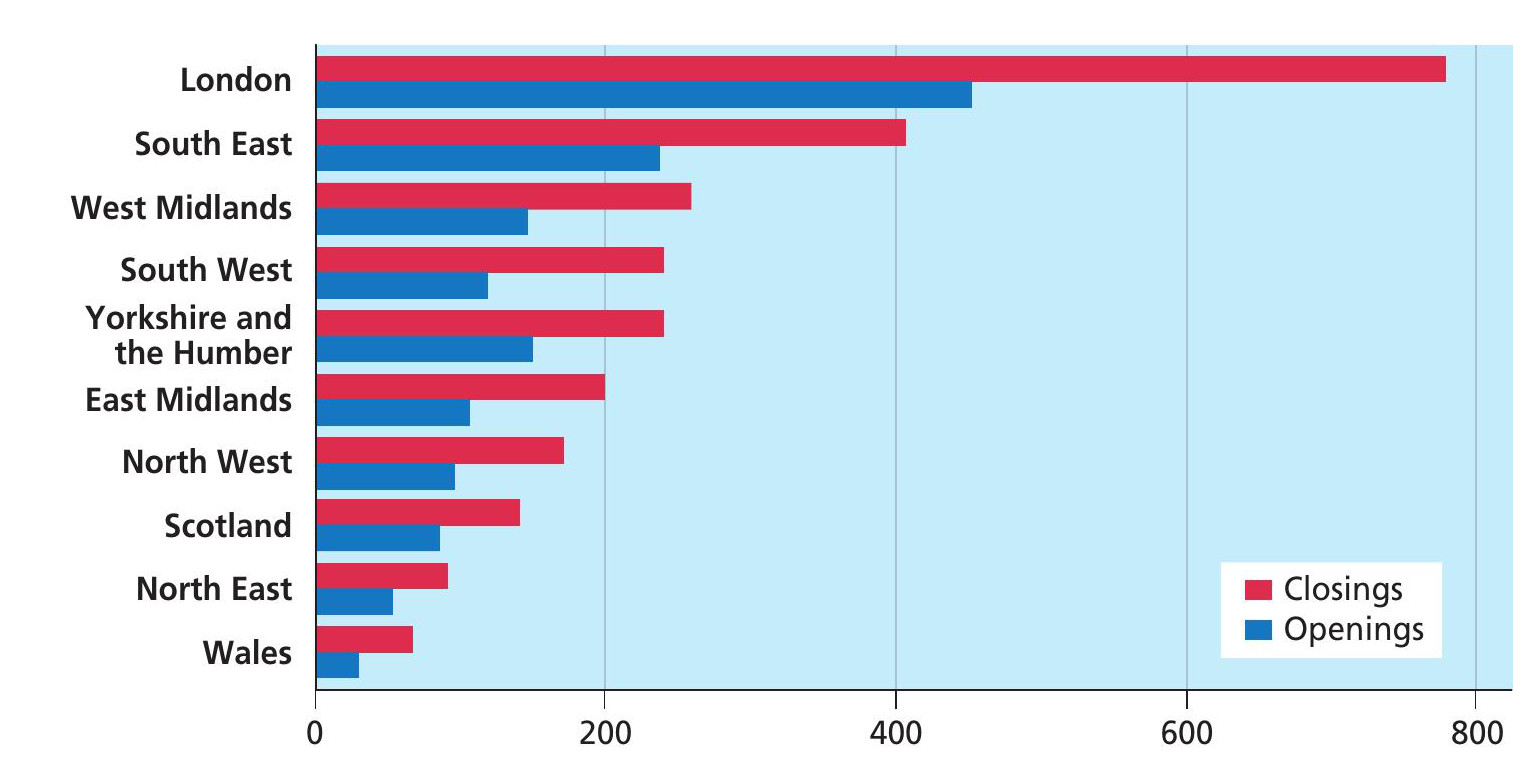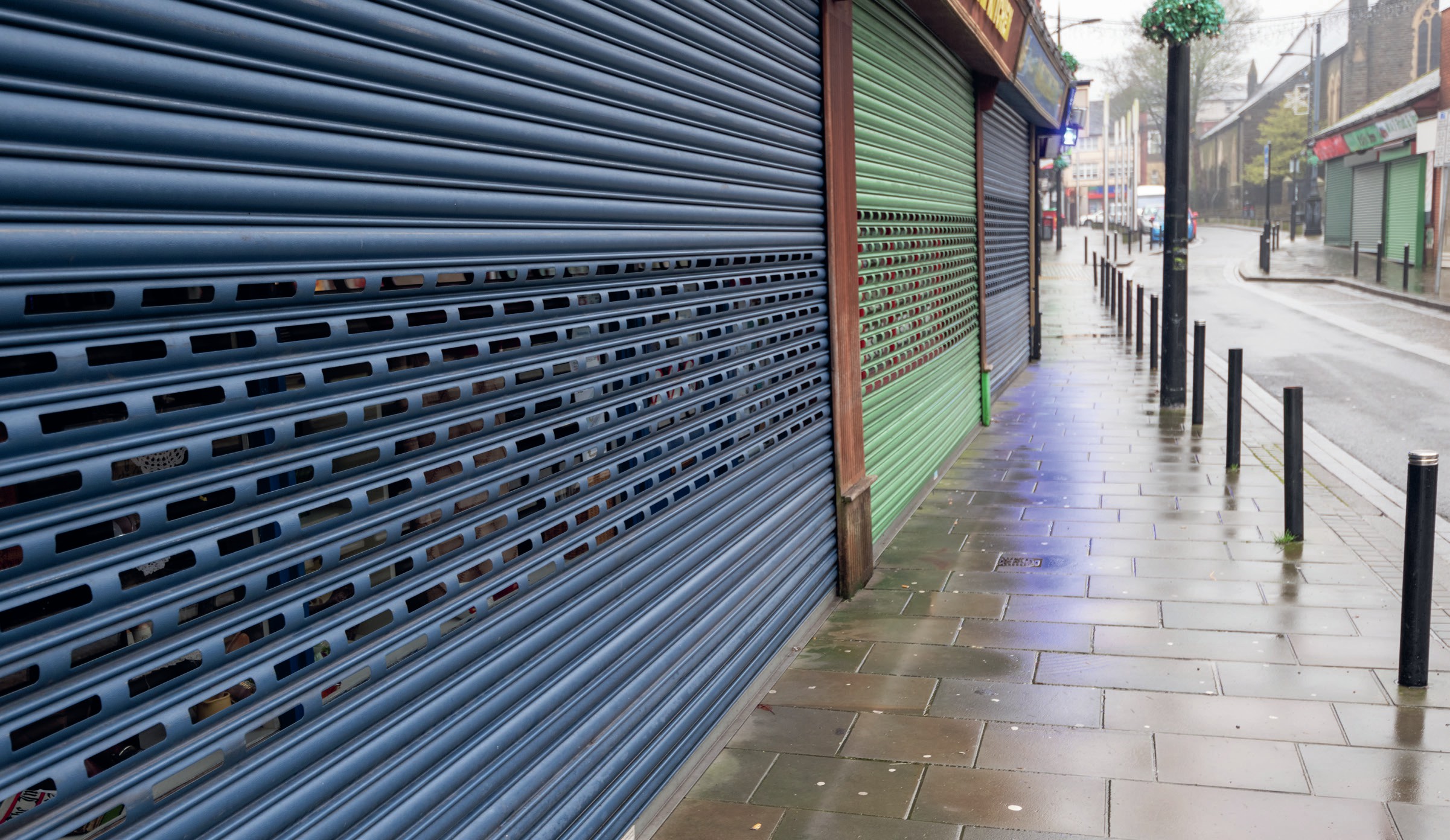How has Covid-19 changed the high street?
Since 2016, more shops have closed than have opened, but has the pandemic contributed to reinventing the high street? As Max Wood explains, working from home, promoting local businesses and lockdown itself have all contributed to the transformation of the high street

SPECIFICATION LINKS
business, spending, behaviour
The high street was in decline long before the Covid-19 pandemic began in 2020. Figure 1 shows the ratio of retail stores opening and closing in different regions of the UK in the first half of 2019. The continuous growth of online shopping is certainly one of the main reasons behind this trend.

There were fears that the pandemic would exacerbate this decline, meaning that more high street shops and businesses would close their doors permanently as shoppers moved their purchases online. Sir John Timpson worried that ‘the Covid crisis will cause 5 years’ change to our high streets in less than 12 months.’
Indeed, as a result of lockdowns, all non-essential shops were closed for months throughout 2020 and early 2021. This arguably helped to accelerate the behavioural shift towards online shopping that was already in progress. However, in 2014, Deloitte predicted that the high street wouldn’t ‘die’ but it would ‘reinvent’ itself following its decline. So, was this the case following the end of lockdowns?

Reinventing the high street
During the periods of reopening, there was a country-wide push to support local businesses that had suffered the most. The ‘Eat out to help out’ scheme encouraged high street spending as well as instilling the idea of supporting your favourite businesses. This had trickle-down effects on other businesses as it drew people to the local high street for the day.
Similarly, in late 2021 the Department for the Economy in Northern Ireland introduced a spend-local scheme through which all over-18s were given a £100 prepaid card to spend in local shops, restaurants and cafés. This emulated an earlier scheme on the island of Jersey to help businesses most affected by the pandemic.
The switch from chain stores to independent ones is part of the reinvented high street — since 2017, the number of chain stores has decreased by 5.97%, whereas the number of independent stores has increased by 1.28%. Some major highstreet names such as Debenhams have closed high street shops. However, this is not likely to happen to all the big names. Instead, many will resize to adapt to the changing business climate. John Lewis is an example of this, announcing that it will downsize stores to showcase fewer but bigticket items, to be viewed in store but likely purchased online. Others have merged with other firms, as discussed elsewhere in this issue of ECONOMIC REVIEW.

Changing working habits
How we work has significantly changed since the arrival of Covid-19. According to the Office for National Statistics, 37% of people reported working from home at some point in 2020, and 85% of those people wanted a hybrid approach to work in the future. Removing the commute brings more free time in a day to shop or eat out locally. The potential shift to a 4-day work week, which companies like Atom Bank have recently done, would also have the same effect. With more people at home and fewer at the office, local high streets may benefit at the cost of the big cities.
The transformed high street that Deloitte predicted may reflect the growth of local businesses and the relative decline of chains and big businesses. While this could just be a temporary reaction to the effects of the pandemic, a consumer survey from Power to Change suggests this is a more permanent change. More than three-quarters (76%) of people would like to see more community businesses established in their local area and 31% of respondents reported feeling more loyalty to their local area. Local authorities will play an important enabling role in providing funding to create community space on the high street.

Repurposing empty spaces
If chain stores, which occupy most of the current high street, are in decline, what will happen to the empty spaces? There are many options. New laws in the UK mean that planning permission is no longer required to repurpose vacant commercial buildings as homes. This would help meet high demand for housing in cities, while avoiding the need to build new homes in protected green areas. The empty spaces could also be converted into offices, which accounted for 11% of all addresses on British high streets in March 2020 and is expected to continue growing. Offices provide an immense trickle-down effect on the high street as the lunchtime crowd can support cafés, restaurants and gyms. Alternatively, the vacant spaces could be filled by new local businesses if authorities can offer support.
Another emerging trend is the rise in mixed-use spaces. These developments contain housing, hospitality, food, leisure and workspaces. Mixed-use spaces bring everything a person needs to their doorstep and offer spaces for social interactions, which bodes well with people working from home. These could become the new high streets and town squares in some suburban areas.
Over 90% of Londoners live within 10 minutes of their high street, with more people working from home, many of whom want to support local business, the future of the high street is looking local. Local businesses and smaller high streets are likely to grow, while big chains and busier high streets are likely to decline or change. Covid-19 may have inadvertently provided a spur for the transformation of the declining high street to provide new life for the growing local high street.





